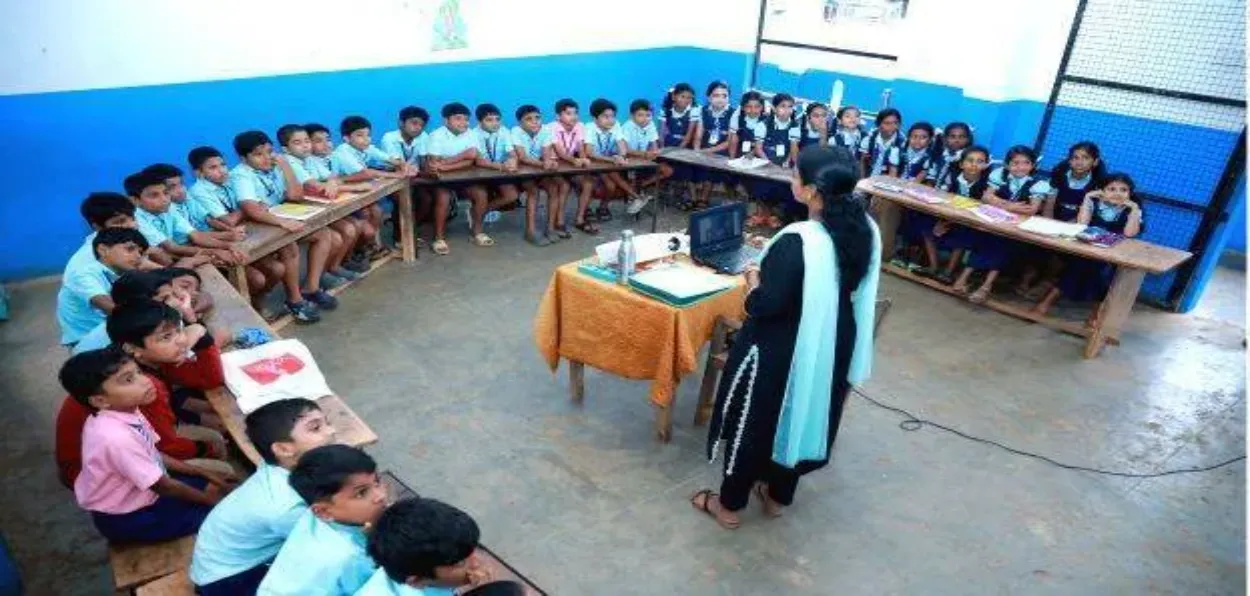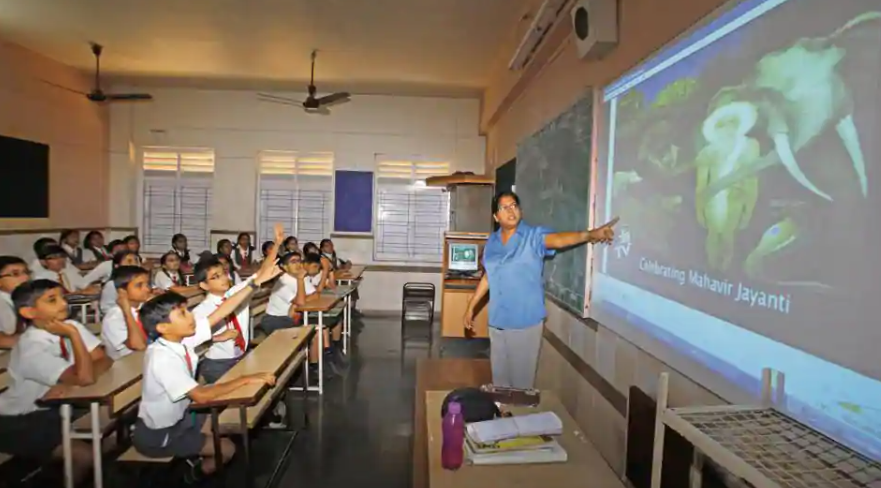
Sreelatha Menon/Thrissur
The U-turn taken by the Kerala Government in accepting the Central Government ‘s PM SHRI (Pradhan Mantri Schools for Rising India) Yojana after months of resistance may have attracted barbs from its own allies like the CPI, but the state education sector is all set to receive a boost in terms of funds not only for the schools which would embrace the scheme but also for the schools running under the Samagra Shiksha programme.
The Centre had refused to release Rs 1500 crore for the latter and linked it to the state compliance with its new PM-SHRI programme. The funds have been withheld for the past two years and this has meant unpaid salaries of nearly 6000 government teachers working under the samagra scheme, another central scheme in government schools.
Following the inking of the MoU, the Centre has released the suspended funds while it is all set to roll out the PM-SHRI programme which will get a total of Rs 1473.13 crore over five years.
The State government had so far refused to accept it, as it was worried if the scheme would impose centralised or “RSS influenced” perspective through its teaching material and threaten the State's autonomy.
However the MoU was signed on the understanding that the state government will not be asked to change its syllabi, says CPM secretary Govindan.
#WATCH | Thiruvananthapuram, Kerala: On the PM SHRI scheme, Director General of Public Education in Kerala, Umesh N. S. K., says, "The Kerala government has now signed the MoU on PM SHRI today. Secretary of the Department of School Education Sanjay Kumar has given clarity that he… pic.twitter.com/MzuydmZmjs
— ANI (@ANI) October 27, 2025
CPI, a coalition partner of the CPM-led government, was up in arm with the deal mainly because it was not consulted as CPI state secretary Binoy Vishwam said in his statement yesterday. CPI and minority groups like Samastha also feared that the teaching materials could promote a centralised or “RSS-influenced” perspective.
However, Kerala signed the MoU on the condition that the state board retains control over the core curriculum. The MoU maintains that the Centrally provided material can be used as supplementary teaching resources rather than replacing the state syllabus.
The compromise allows schools to benefit from PM SHRI funding and pedagogy support while keeping local educational priorities intact, says Govindan.
It is pragmatism to accept the good aspects of a central scheme rather than throw everything and sit with no funds, adds CPM leader Radhakrishnan. “Almost every sector has centrally sponsored schemes. If we start rejecting them only because they are coming from the centre, we would be losing much needed funds in those sectors,” he added. That’s a sure recipe to become paupers, he added.
Aside of the bitterness and embarrassment around the state’s pragmatic decision to accecpt the central PM Shri yojana, the MoU is all set to inject a booster dose of funding into the government schools.

A classroom with smartboard in Kerala
The PM Shri will cover two schools in each of the 152 blocks in Kerala. That is roughly 300 schools.
Each school would get an allocation of a crore annually while the scheme would get a total of Rs 1476.13 crore over five years. The state has about 11000 government and aided schools. These schools are expected to compete for selection as a PM SHRI model school as per the scheme.
The selected schools would have additional teachers, labs, libraries and digital infrastructure, as per the programme.The MoU would mean recruitment of more teachers.
Prof Amrit Kumar, dean of the Central University Kasaragod, says, “The state government depends on the centre heavily for funding. It has no choice but to agree to the central NEP if it wants the Rs 1500 crore for the Samagra Shiksha scheme withheld by the centre."
About 6000 teachers hired for that scheme are currently working without pay as the centre has not been releasing the funds, says Kumar. So it is only rational for the state to accept the funds at any cost, he said.
He says that the state had no education policy of its own and has been following central schemes from the time of Indira Gandhi who started the system of attaching funds to central schemes.
CPM leader Radhakrishnan says it is sheer pragmatism on the part of the government. We may object to certain aspects of a central scheme. But we can always negotiate around those and accept what is acceptable, he says justifying the acceptance of the NEP in Kerala.
We need funds for improving our school infrastructure, to set up labs and libraries. What is wrong if we get the funds to do it under a central scheme? But we have made it clear that we won’t teach their textbooks which show Hanuman as the first pilot. Textbooks can’t be imposed on us, he said.
ALSO READ: Did Malayalam movie Aadujeevitham force Sauds to abolish the Kafala system?
Schools would offer integrated subjects, STEM and skill based learning.
|
Feature |
Regular state govt school |
PM SHRI school in Kerala |
|
|
Curriculum |
Kerala board books |
Kerala board books and supplementary PM Shri books |
|
|
Class room infrastructure |
Usual classrooms and labs |
Upgraded class rooms, labs and libraries |
|
|
Digital tools |
Minimal |
E-content, smart boards, digital lessons |
|
|
Teacher training |
Regular govt training |
Specialised for modern pedagogy |
|
|
Value and life skills |
Limited, state-driven |
Central modules on ethics and health |
|
|
Student development |
Academic |
Holistic, arts, sports, experiential |
|
|
Teacher student ratio |
20:1 |
30:1 (Kerala already Exceeds this need) |
|
|
Funding |
Routine funding |
Rs 1 cr per year |
|
|
Exposure |
Local |
National level contests, workshops |
|
|
Goal |
Basic education |
Model school experience with better infrastructure and holistic development |
|
